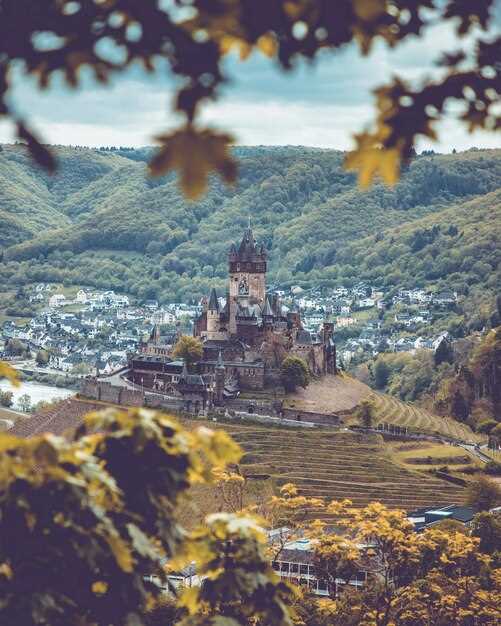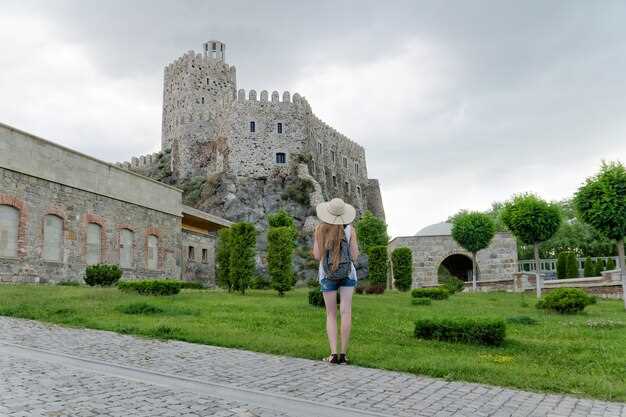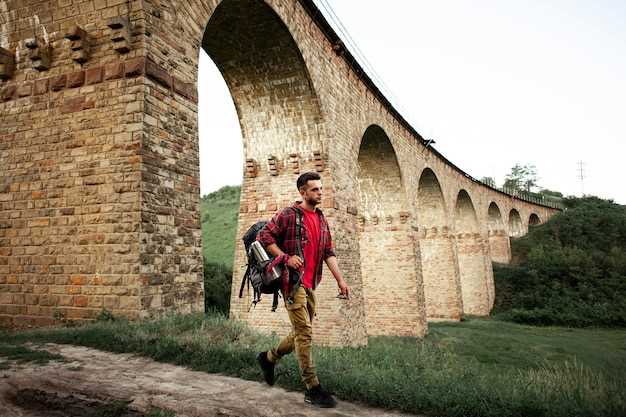
Start in mdina at dawn, when the crenelated walls crown the city and the piazzas glow softly. This aristocratic site offers colorful lanes and structures that tell centuries of history, inviting you to walk slowly and completely absorb the atmosphere. when you step outside the gate, you feel the city’s heartbeat and know you found a perfect opening to begin your list of medieval wonders.
From mdina, head north to italy towns where towers rise above olive terraces and medieval squares become living masterpieces. In colorful squares you hear bars from nearby cafes; the site invites slow travel, letting you trace structures and other masterpieces which gleam under the sun, and you can wander until the light changes and the street shadows deepen.
Next, travel through Iberian cities like toledo, where fortress walls and narrow lanes defended against attack, and the cathedrals blend Romanesque and Gothic patterns in a dramatic collage. Use a compact map to visit the site where structures reveal how communities organized defense and daily life, then pause at a balcony to savor the colorful facades that tell stories long after the bells ring. This stop is ideal for a slow lunch and a few pints at local bars before continuing along the route.
Finish in the north with bavarian towns where fortified cores sit beside bustling squares, offering a different medieval texture. Let the crenelated skyline reflect in river waters, and plan your next leg to explore the routes that maximize site visits. The loop rewards patience until you’ve traced a chain of remarkable sights across Europe, with which medieval structures standing as masterpieces for italy and beyond.
Sigişoara, Romania – 4 Must-See Stops for a 1-Day Medieval Walk
Begin at Clock Tower Square and take a compact circuit that keeps you in the walled core; you’ll experience the medieval heart completely.
Stop 1 – Clock Tower Square: Climb the Clock Tower for views over the warm, pastel buildings. The ascent opens a small courtyard and reveals the clock’s mechanism, an attraction that sets the pace for your day. From the square, you find straight lanes, bustling markets, and neighborhoods where crafts and cafés thrive.
Stop 2 – Church on the Hill: Walk toward Biserica din Deal, perched above the citadel walls. The exterior silhouette is mighty, with towers that have guarded the town for ages; inside the light is restrained, yet the surrounding courtyard behind is serene. The site offers protection from the bustle and today presents sweeping views over the town and its old streets, linking past to today.
Stop 3 – Vlad Dracul’s Birthplace and the Weavers’ Quarter: The birthplace of Vlad II Dracul sits near narrow, timber-framed lanes. You can find tiny shops tucked into the old fortifications; this full neighborhood reveals how history sits beside daily life. The area connects to nearby forts and towers and to the legend that traveled through ages, making a distinctive attraction for visitors who want to feel the weight of legend.
Stop 4 – Scara Școlarilor and the Upper Walls: The Scholars’ Stair climbs to the upper town, offering straight-lined views of the citadel and its walled perimeter. On the way you pass several charming neighborhoods with warm welcomes, tiny courtyards, and even a remnant of an aqueduct along the ramparts. Return to the Market Square with a sense of the mighty past and the full, compact beauty of Sighișoara–krumlov-like in spirit, and linked in memory toMadrid and Toledo for travelers comparing European medieval cores.
Prague, Czech Republic – 3 Must-See Gates and 2 Time-Saving Routes

Begin at the Powder Gate, a sturdy Gothic gate from the late 15th century that once guarded gunpowder and welcomed coronations. Climb the steps to the terrace for a panorama over the red-tiled roofs and the preserved walls of Old Town. These views connect ages of trade and culture and show Prague’s strategic layout, a contrast to the defensive rings you might see in toledo, segovias, and rothenburg–western towns that shaped medieval life. Italy’s influence on architecture and urban planning also left its mark here. Explore these neighborhoods on foot, then return to the gate to start your route with purpose.
3 Must-See Gates

Powder Gate (Prašná brána) – the gateway where Prague begins its ceremonial procession; built in the late 1400s, it is a sturdy entry with a dramatic arch and an elevated platform that looks out over the red-tiled city.
Old Town Bridge Tower – the gate at the Old Town end of Charles Bridge, offering panoramic views of the Vltava, Old Town, and the bridge’s stone spans; torre echoes of Gothic craft and practical defense, with a terrace that feels like a front-row seat to history.
Lesser Town Bridge Tower – on the Malá Strana side, a gate that leads directly to the winding lanes and steep steps toward the castle; use it as a fast channel to the hill and capture views over the stretch and the preserved city walls.
2 Time-Saving Routes
Route 1: Powder Gate → Celetná Street → Old Town Square → cross Charles Bridge → Nerudova to Prague Castle. This loop minimizes backtracking, keeps you on scenic sidewalks, and compounds views of red-tiled roofs and ages of architecture in a single ascent.
Route 2: Powder Gate → Lesser Town Gate → Nerudova Street up to Hradčany. Start with the Malá Strana side, then ascend to the castle without retracing steps; this path tightens timing while delivering the best vantage points across the river, the western hills, and a few medieval churches along the way.
Bruges, Belgium – 2 Canals, 1 Central Square, and Local Bites Tips
Book a sunrise canal cruise along the two canals, then step onto Bruges’ Markt, the central square, to watch the city wake under aristocratic gables and colorful tiles.
From Markt, walk toward the Burg quarter and visit Gruuthuse Museum, where 18th-century façades line the street and defensive stonework recalls Bruges’ medieval fortifications. The area blends charming neighborhoods with approachable attractions, and alcázar-inspired courtyards offer sheltered corners for your pause and reflection.
For bites, head to a family-run cafe near the square for mussels with fries, a pot of Flemish beef stew, and a waffle for dessert. Look for a small company that offers a chocolate and beer pairing; it makes a tasty break part of your day, and your wallet will thank you.
Stroll along the Dijver and Rozenhoedkaai toward colorful houses and into canal-side neighborhoods. You’ll notice tiles on storefronts and a few portugal-inspired ceramic accents, campeche-inspired touches, and Gotland stone details on bridges that add texture. The western vibe shows in Madrid-like shop windows and markets; sometimes a guide shares short tales about attacks on the city walls, which deepen your appreciation. Step back to the Markt when you’re ready, and thanks for planning this compact, flavorful visit. Which step you take first sets the rhythm of your Bruges stay.
Carcassonne, France – 3 Key Walls Walk with Practical Access Tips
Start at Porte Narbonnaise and walk the north curtain for about 1.2 km. Situated on a limestone hilltop, the route offers quiet moments, sweeping valley views, and windows that frame the largest towers. A porta-style arch near the gate adds a medieval touch. This stretch emphasizes defensive architecture, with ramparts spanning the hill and corbelled walkways that reveal how these walls were built to protect the citadel. You’ll find that the path is well-marked, and the stones invite you to feel the craft built into the walls. If you’re after something incredible, this first leg delivers it with steady pace and shade along several sections. The concept echoes viking fortifications elsewhere in Europe, underscoring how hilltop defense shaped buildings and cities across time.
The central walk, along Chemin de ronde, follows the inner ramparts and climbs toward remarkable towers. These parts span the hill, linking the citadel to the surrounding countryside. The route features arrow-slits and windows that frame the inner courtyards. theyre sturdy underfoot, and you can pause at several vantage points to soak in the scenery. According to signage, this stretch is a favorite for photographers, and in calm weather you can hear birds above the stone. If you want quiet, this leg often stays below the crowds in mid-morning. You’ll find ample opportunities to read the defensive layout as you move from one courtyard to the next, with the largest towers providing a dramatic backdrop for photos.
The southern curtain toward Bastide Saint-Louis wraps up the circuit. This leg reveals flatter sections and the mediterranean light that bathes the stone in a warm glow late in the day. In the nearby markets, traders offer crafts that nod to italy and local flavors, including ceramics and herbal potions. You can step down to explore shops and cafes, or simply pause on a bench to watch the city life unfold. The route here is easy to finish in about 20 minutes, with rickety steps replaced by gentle slopes in places. Cars are not allowed inside the citadel, so plan to park outside and walk in. It’s remarkable how these walls continue to serve both visitors and residents. There is no mosque inside the citadel; nearby religious sites contribute to a varied, Mediterranean-inspired ambiance, with quiet courtyards and stone buildings that invite slow exploration.
| Wall Segment | Access Tips | Best Time |
|---|---|---|
| North Gate – Porte Narbonnaise | Park outside the walls, start early to avoid crowds; wear sturdy shoes; stay on the flagged path; watch for uneven steps; bring water | Early morning or late afternoon |
| Central Ramparts | Follow the Chemin de ronde; use handrails on stair sections; expect arrow-slits and windows; no cars inside | Mid-morning |
| Southern Curtain toward Bastide Saint-Louis | Plan to explore markets nearby; enjoy the mediterranean light; rest on benches; bring water | Late afternoon |
Rothenburg ob der Tauber, Germany – 2 Best Sunsets and 1 Quiet Morning Walk
Head to the Rathaus tower for sunset to see gleaming rooftops, then descend toward the markt for a softer, golden view along the streets because the town remain remarkably well-preserved, a completely timeless example of a 12th-century fortress town that feels like Tallinn in miniature.
-
Sunset spot 1: Rathaus terrace and the fortified walls
Climb late in the afternoon and watch the sky wash the Gothic façades in amber. The hall of the town hall reflects the light, windows glow, and the bridges over the Tauber mirror the golden hue. The scene showcases a powerful, masterful composition of 18th-century details and 12th-century strength, with merchants’ lined streets fading into silhouette. It’s a moment you can repeat later, then walk a short stretch along the wall for a viewpoint where the entire red-tile skyline feels like a living diorama.
-
Sunset spot 2: Plönlein and the Markt overlook
From the iconic Plönlein, stroll toward the Markt as the sun lowers. The timbered façades glow, the market stalls quiet, and the whole scene reads like a well-preserved masterpiece. The route passes fortified corners, then river bridges that flash with the last light. You sense centuries of trade–merchants at the Markt, china in shop windows–lined along streets that have remained completely intact through time. Then take a final turn toward a quiet angle where the town’s heart seems to breathe with the day’s last breath.
One quiet morning walk
- Begin at the Markt before shops open, when the streets are calm and the stone still feels cool underfoot; take in the 18th-century façades and the Gothic arches that frame every corner.
- Follow the well-preserved wall path toward the northern gate, pausing at windows that overlook the Tauber and the sleepy town; the route runs completely along centuries of civil life, then returns you to the heart of the old town.
- Loop back through narrow lanes lined with timber-framed houses, where the air carries a faint scent of coffee and bread–perfectly quiet moments to observe the work of skilled craftsmen who still maintain centuries-old traditions.
